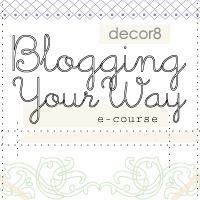Fingerless Gloves in Sculpted Fleece
 Friday, February 20, 2015 at 6:00AM
Friday, February 20, 2015 at 6:00AM I recently wrote about some fingerless gloves that I made for a friend for Christmas using the techniques of Alabama Chanin. I really liked how they turned out, and they started me thinking about making a pair for myself to slip on when I am stitching (or typing blog posts). One thing I love about being a maker is taking inspiration from one source and using other, different techniques to create an entirely new product. I did just that with my houndstooth/paisley skirt, combining an Alabama Chanin stencil with wool felt applique instead of the more expected cotton jersey.

For my own gloves I again started with a Chanin stencil but I used an entirely different technique for the applique, sculpted fleece. I love Lyla Messinger's technique for making polar fleece appear carved or sculpted. I have made a number of items using this technique and blogged about those pieces here.
The pattern for the gloves comes from Alabama Stuido Sewing + Design with a slight modification. Instead of cutting two pieces for each glove, I eliminated one seam and cut the glove as a single piece. This made the applique process much easier and reduced some bulk but I did lose some shaping from that seam.
For this technique, it's important to use a fleece that has two distinctly different faces. The black fleece I used had one side with a micro-grid design and the other with a berber-like finish. Once the gloves were cut out I began by applying the stenciled design.
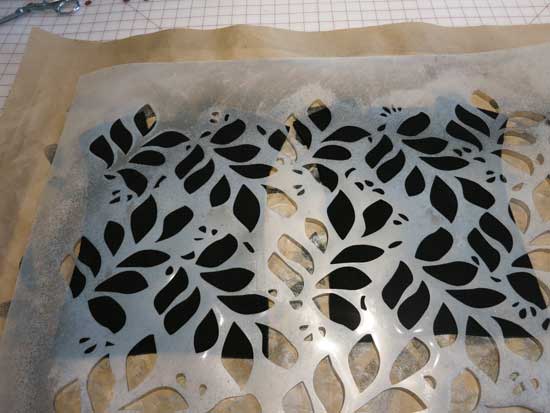
I used temporary spray adhesive to hold the stencil in place. I transfered the design to the smooth (right) side of the fabric using Quilter's Stencil Marking Spray, a chalk-like spray that washes out with water.
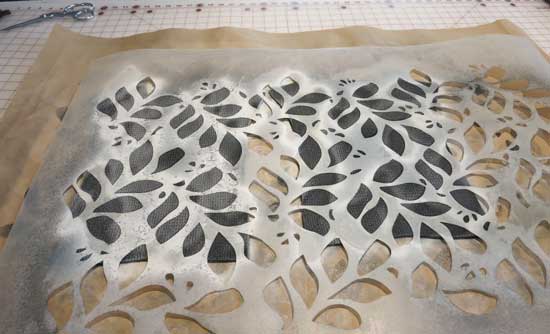
This marked the placement for the applique pieces. I also transfered the stencil to another piece of fleece; these pieces were the shapes that were appliqued onto the gloves. Here's what the various pieces looked like after the stenciling was finished.

Working one section at a time, I cut out the pieces for the applique and pinned them in place over the corresponding design on the gloves. The nubby back-side was placed face up on top of the smoother side of the fleece. I used black sewing thread on top and in the bobbin (you can also use invisible thread) and zigzagged around the edge of each shape.

That's really all there is to it. It is a very simple and forgiving technique that leaves people wondering how you accomplished it.
To finish off my gloves I took some lycra fabric strips and applied them like binding to the thumb and finger openings as well as the bottom edge. Knits are notorious for stretching out along cut edges, fleece being no exception. I felt this would give those edges some stability.
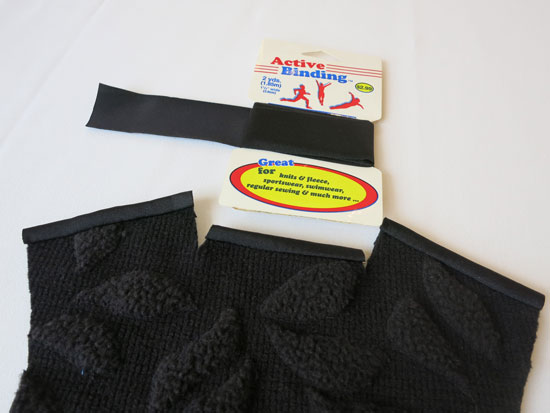
Once the binding was applied I stitched the seams, right sides together, and my gloves were complete.
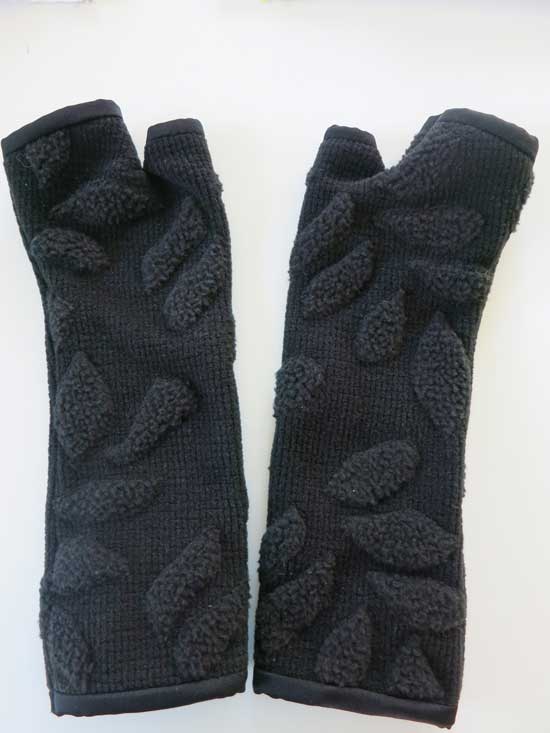
I hope you will try this technique on a project of your own or use my ideas as a jumping off point to combine two (or more) ideas into a new and unique project all your own.
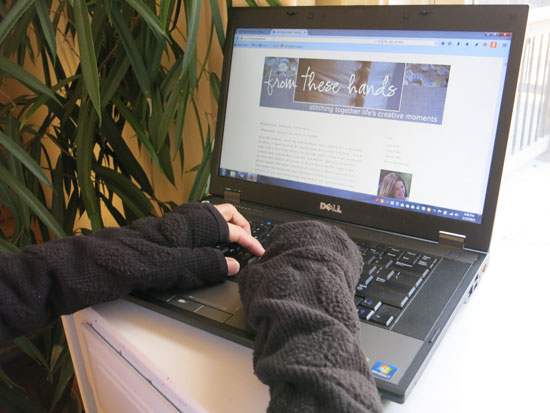
 alabama chanin,
alabama chanin,  sculpted fleece in
sculpted fleece in  Alabama Chanin,
Alabama Chanin,  applique,
applique,  sewing
sewing 

